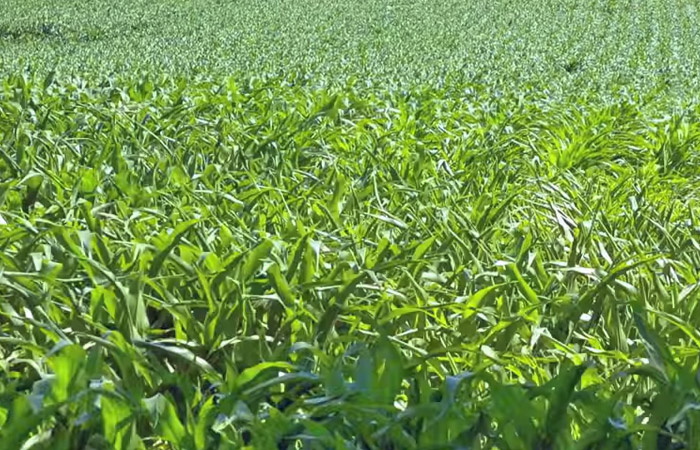Manitoba Agriculture reports reduced rain and higher temperatures over the past week have helped speed along crop development, especially for crops like soybeans, corn and dry beans.
Dennis Lange, a pulse and soybean specialist with Manitoba Agriculture and editor of the provincial crop report, says in spite of warmer temperatures and reduced rain soil moisture is still optimal to wet.
This past week rainfall amounts ranged from just a trace to 51 millimetres and the big thing with the rainfall, there were just some isolated thunderstorms that dumped rain in different areas. Most of week was fairly dry and, as we move forward here, most of Manitoba right now at that 30-centimeter soil moisture depth is showing optimal to wet moisture conditions at surface depth, so we’re good moisture wise right now.
When we look at accumulated growing degree days, most of Manitoba ranges from about 95 to 110 percent of the normal growing degree days. We’re definitely starting to warm up a little bit, maybe not quite as warm as what it was last year by this time, but things are definitely starting to warm up and that’s definitely been benefitting some of the longer season crops like soybeans and corn and dry beans. They’ve really moved along in the last week or so.
Where there is going to be some crop loss is in areas with excess moisture. They have been lost just because of standing water but the rest of the field typically looks pretty good. I think that’s been the biggest thing right now. There’s been no major other weather events that are widespread.
Disease for the most part has been minimal so far this year and, even on the insect side of things, it’s been fairly minimal so far this year. Things are looking good.
The hot weather that we’re experiencing now always brings risk of thunderstorms so that’s why we’ve been getting these thunderstorms but generally the crop looks pretty good and we look forward to seeing what’s going to happen over the next few weeks.
~ Dennis Lange, Manitoba Agriculture
Lange acknowledges crops are a little behind what we’ve seen in past years but once we get some drier weather and heat, things tend to move rapidly along.




